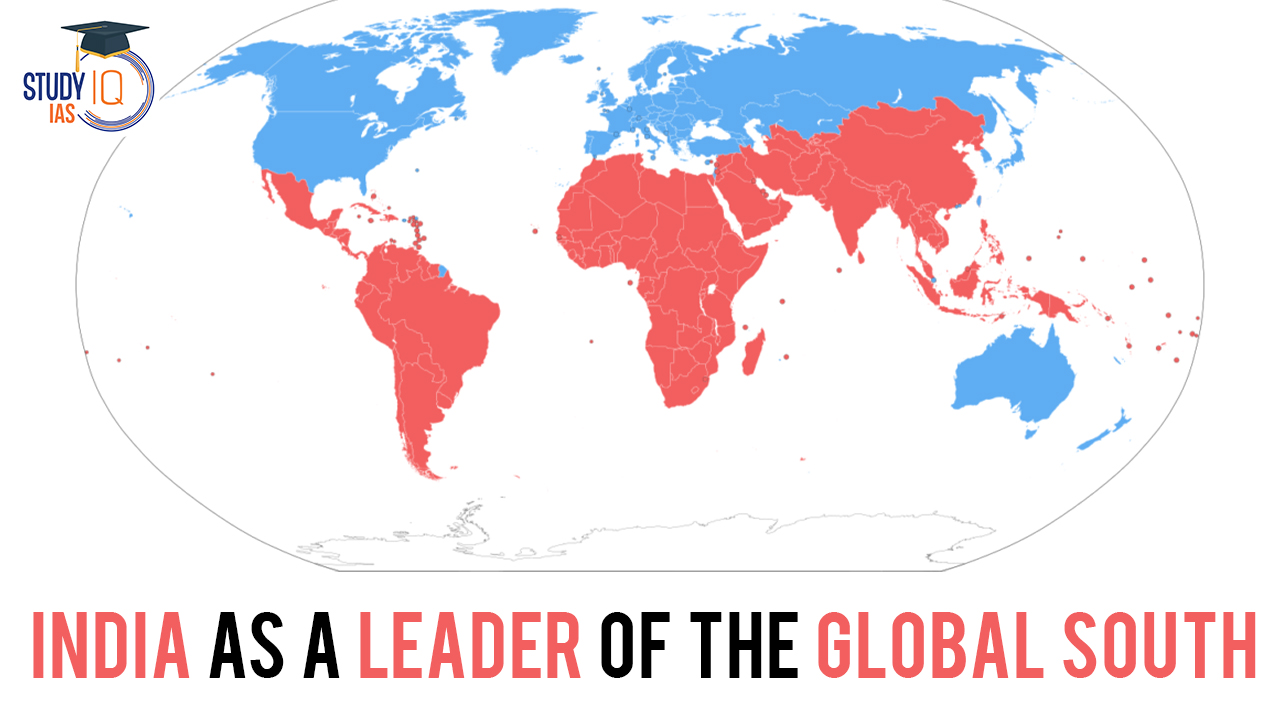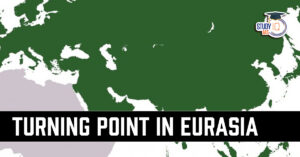Table of Contents
India as a Leader of the Global South
Prime Minister Narendra Modi talked with his Mauritian counterpart Prime Minister Pravind Jugnauth in New Delhi on 8th Sep 2023 during their first bilateral meeting before the G20 Summit 2023. He reaffirmed India’s commitment to advancing the voice of the Global South.
In a rapidly changing global landscape, India has assumed a pivotal role as the leader of the Global South, championing the interests and concerns of countries that have historically been underrepresented in international forums. As India takes on the G20 Presidency, it underscores its commitment to being the “voice of the Global South,” a term that encapsulates nations in Asia, Africa, and South America. This article delves into the significance of India’s leadership in the Global South, explores the challenges it faces, and outlines potential avenues for its continued success.
Understanding the Global North and Global South
To comprehend India’s role as the leader of the Global South, it’s essential to first understand these terms. The “Global North” includes economically developed nations like the United States, Canada, Europe, Russia, Australia, and New Zealand, while the “Global South” encompasses countries from Asia, Africa, and South America. This classification is rooted in economic disparities, education and healthcare indicators, among other factors.
However, it’s important to note that this division is not solely based on economic wealth. In recent decades, countries like India and China have made significant economic strides, challenging the notion that the Global North is the sole epitome of development.
Historical Classification Systems
In the past, countries were categorized using different systems. The “First World, Second World, and Third World” classification emerged during the Cold War era, with the First World aligned with the United States, the Second World with the USSR, and the Third World representing non-aligned countries.
Another approach, the “World Systems Approach,” divides nations into core, peripheral, and semi-peripheral zones based on their production capabilities. The core zones, often developed nations like the U.S. and Japan, reap profits from cutting-edge technologies. In contrast, peripheral zones engage in less sophisticated, labour-intensive production. Semi-peripheral countries like India and Brazil fall in between.
Western and Eastern classifications typically denote economic development, with Western countries considered more prosperous, and Eastern countries viewed as transitioning toward development.
Read about: ITPO complex
Emergence of Global North and South
The transition from Cold War-era classifications to Global North and South came about due to the changing geopolitical landscape. The disintegration of the USSR in 1991 left most countries with no choice but to align, to some extent, with the capitalist United States, the remaining global superpower. The East/West binary was criticized for perpetuating stereotypes about African and Asian countries, leading to a need for a more nuanced classification.
Moreover, the Global South’s shared history of colonization and underrepresentation in international forums, such as the United Nations Security Council, has contributed to its slower growth and development.
Initiatives for South-South Cooperation
To address the unique challenges faced by Global South countries, various initiatives have been established. The BRICS Countries (Brazil, Russia, India, China, and South Africa) and IBSA (India, Brazil, South Africa) forums promote cooperation among these nations on multiple fronts, including economic development and global governance.
The International Day for South-South Cooperation, moved to September 12 in 2011, commemorates the United Nations’ plan of action adopted in 1978 to facilitate technical cooperation among developing countries.
India has played a pivotal role in advocating for the TRIPS waiver, which aims to temporarily ease intellectual property rights on COVID-19 vaccines and treatments, enabling wider production to combat the pandemic. The Vaccine Maitri campaign exemplifies India’s commitment to its neighbours, aligning with its ‘Neighbourhood First’ Policy.
Challenges Faced by the Global South
Despite the progress made, the Global South confronts numerous challenges. Many Global North countries, responsible for higher global emissions, have been reluctant to fund green energy initiatives, leaving less-developed nations to bear the brunt of climate change consequences.
The Russia-Ukraine war has further exacerbated concerns for least-developed countries, affecting food, energy, and financial stability. China’s Belt and Road Initiative (BRI), while offering infrastructure development, raises questions about its true intent and benefits for both parties.
The dominance of the United States in international affairs continues to be a significant hurdle to achieving a multipolar world. Unequal access to resources and the historical skew in favor of advanced economies in industrialization persist, hindering global convergence.
The COVID-19 pandemic has accentuated existing divides, with Global South countries facing unique challenges in dealing with its consequences, both socially and economically.
India as the Voice of the Global South
India’s emergence as the leader of the Global South demands active engagement with regional politics within developing nations. Recognizing the diversity within the Global South in terms of wealth, power, needs, and capabilities, India must tailor its policies to different regions and groups.
India’s aspiration to bridge the North-South divide by focusing on practical outcomes rather than ideological battles aligns with the changing global dynamics. Effectively translating this ambition into policy could ensure no contradiction between pursuing universal and particular goals.
In conclusion, India’s role as the leader of the Global South carries immense significance in the evolving global order. As it assumes the G20 Presidency and advocates for South-South cooperation, India has the opportunity to shape a more equitable and inclusive world. However, it must navigate the challenges posed by climate change, geopolitical conflicts, and unequal resource access to fulfil its vision of a stronger, more united Global South.
India as a Leader of the Global South UPSC
The topic of “India as a Leader of the Global South” holds great significance for UPSC (Union Public Service Commission) aspirants as it directly aligns with the UPSC Syllabus, particularly in the realm of international relations and contemporary global issues. Understanding India’s role as a leader in the Global South is crucial for candidates preparing for UPSC exams, as it sheds light on India’s foreign policy, diplomatic efforts, and its position in global forums like the G20. This knowledge is integral to acing UPSC exams and can be effectively explored through UPSC Online Coaching and UPSC Mock Tests, where candidates can analyze India’s diplomatic strategies, its efforts in South-South cooperation, and its role in addressing global challenges – all of which are pertinent topics in the UPSC syllabus and often feature prominently in the exams.


 China, Pakistan and Bangladesh Trilatera...
China, Pakistan and Bangladesh Trilatera...
 America’s Plan to Manage AI Proliferat...
America’s Plan to Manage AI Proliferat...
 Turning Point in Eurasia and its Implica...
Turning Point in Eurasia and its Implica...





















